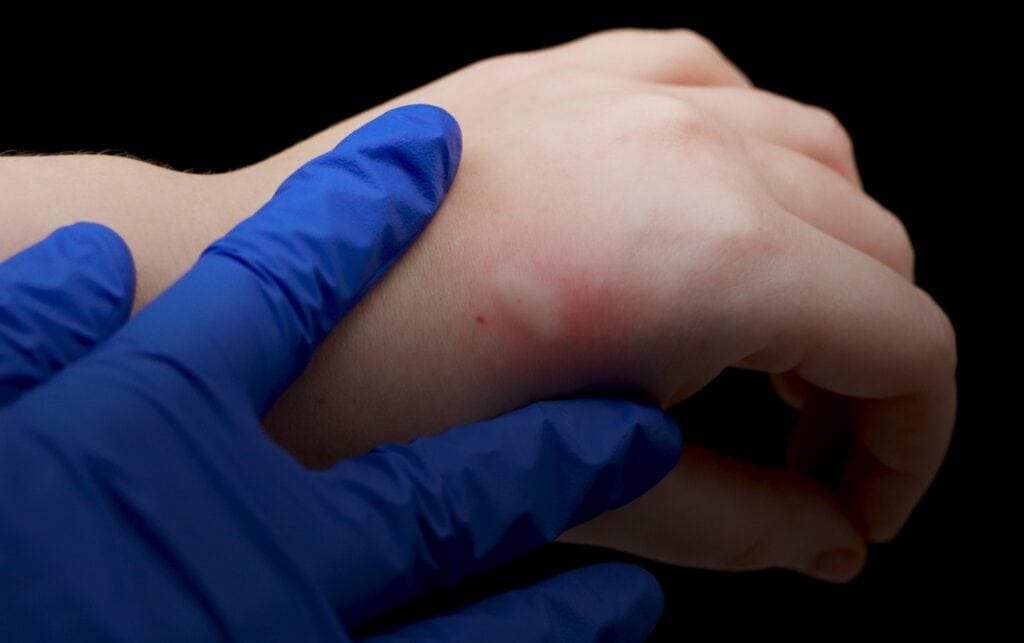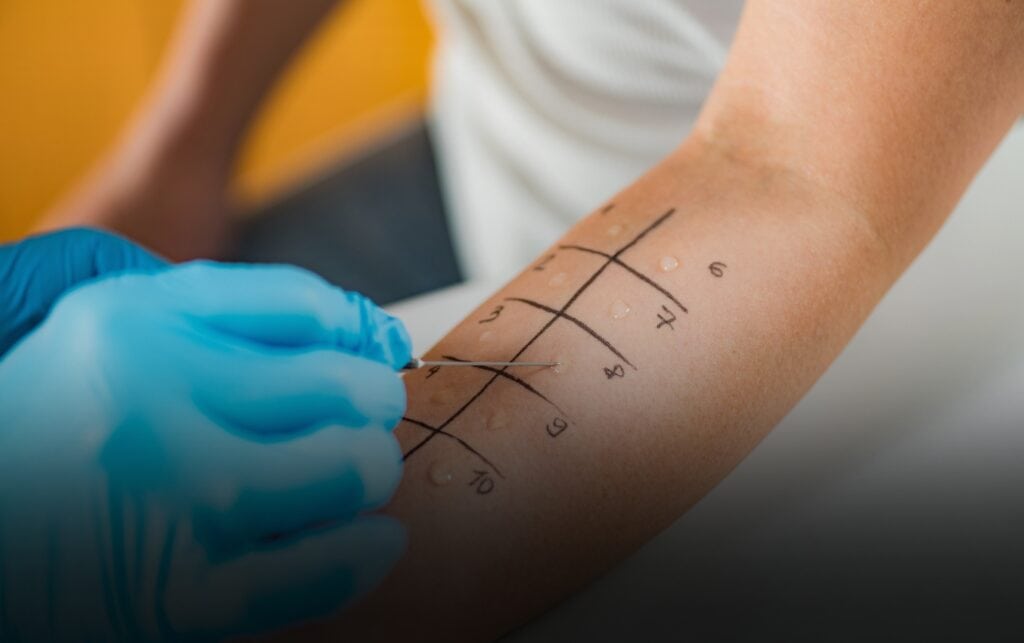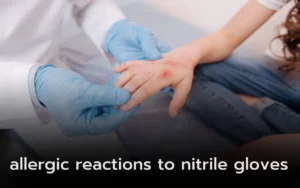Nitrile gloves have become a popular choice in medical settings and other industries due to their perceived safety in comparison to latex gloves. However, it is important to note that nitrile gloves can still potentially cause allergic reactions in some individuals, even in home environments, due to the presence of chemical accelerators used in the manufacturing process of these gloves. These chemical products can cause skin irritation and other adverse reactions, making it important to carefully consider the potential risks before using nitrile gloves.
Table of Contents
- Uncovering the Hidden Dangers of Nitrile Gloves about Potential allergic reactions
- Signs and Symptoms of Nitrile Gloves Allergy
- How to prevent allergic reactions to nitrile disposable gloves in workplaces.
- Managing Allergic Reactions to Nitrile Gloves
- Questions about disposable nitrile gloves and allergic reactions
- Long-term effects of repeated nitrile glove exposure
- How can healthcare workers identify if they are allergic to nitrile gloves?
- How to fix allergic reactions to nitrile gloves:
- Related Posts
Uncovering the Hidden Dangers of Nitrile Gloves about Potential allergic reactions
Chemical accelerators such as carbamates, mercaptobenzothiazole (MBT), and thiurams are commonly found in nitrile gloves and can trigger allergic contact dermatitis in those who are sensitive to these chemicals, also known as rubber accelerators. Allergic reactions to nitrile gloves can manifest as hives, blisters, itching, and burning sensations on the skin. It is crucial for individuals who experience these symptoms while wearing nitrile gloves to seek medical attention and discontinue use to prevent further irritation.
In addition to allergic reactions, nitrile gloves can also cause irritant contact dermatitis in some individuals. This condition is not caused by allergies but rather by factors such as moisture buildup and prolonged wear of the gloves. Symptoms of irritant contact dermatitis can include blisters, lesions, and dry skin. It is important for individuals who experience these symptoms to take precautions such as using barrier creams and changing gloves frequently to avoid further skin irritation.

Signs and Symptoms of Nitrile Gloves Allergy
Nitrile gloves have become a popular choice for individuals with latex allergies, as they are made from a synthetic material that does not contain latex proteins. However, it is important to note that some individuals may still experience allergic reactions to nitrile gloves.
Common symptoms of a nitrile glove allergy include itching, redness, swelling, and skin rashes. In more severe cases, individuals may experience difficulty breathing and chest tightness, although these reactions are rare. It is important to be aware of these symptoms and seek medical attention if experiencing a severe reaction.
It is also important to distinguish between allergic reactions and contact dermatitis when it comes to nitrile gloves. Allergic reactions involve an immune system response to the material in the gloves, while contact dermatitis is a reaction to the chemicals used in the manufacturing of the gloves. Contact dermatitis can result in itchy, weepy rashes that can last for days to weeks.
While allergies to synthetic materials like nitrile do exist, they are less common than latex allergies. However, the chemicals used in synthetic rubber gloves can still trigger allergic contact dermatitis in some individuals. It is important for individuals who experience any symptoms of an allergic reaction to nitrile gloves to seek medical advice and consider alternative options for hand protection.
How to prevent allergic reactions to nitrile disposable gloves in workplaces.
When it comes to potential allergic reactions to nitrile gloves, there are several key strategies to consider in order to prevent and manage any adverse effects. Firstly, using nitrile gloves that are accelerator-free and powder-free can significantly reduce the risk of allergic contact dermatitis.
Chemical accelerators used in the manufacturing process can trigger reactions in some individuals, so opting for gloves without these additives can help mitigate this risk. Additionally, powder-free gloves can also help decrease the likelihood of skin irritation.
Another helpful tip is to wear cotton or nylon inner gloves underneath the nitrile gloves. These inner gloves can help absorb moisture and reduce friction, which can otherwise lead to irritant contact dermatitis. It’s important to prioritize comfort and skin health when wearing protective gloves for extended periods of time.
If any signs of allergic reaction do occur, such as hives, rash, itching, or swelling, it’s crucial to seek medical attention promptly. Informing an occupational health professional or consulting with a dermatologist can help identify the cause of the reaction and determine the appropriate course of treatment, including a skin test. It may be necessary to switch to vinyl gloves, which have low chemical residues and are less likely to cause allergic reactions, in order to alleviate the symptoms.
Additionally, educating workers on the potential for allergic reactions to nitrile gloves and emphasizing the importance of reporting any symptoms related to regular glove use is essential for early identification and management of any issues. By staying informed and proactive, individuals can reduce the risk of an allergic reaction to nitrile gloves and ensure a safe and comfortable work environment.
It is also important to consider the different types of gloves available, such as latex and nitrile, and their potential impact on individuals with allergies. By understanding the materials and methods used in glove production, employers can make informed decisions to prevent allergic reactions in the workplace.
Managing Allergic Reactions to Nitrile Gloves
Choose powder-free nitrile gloves, avoid chemical accelerators, change gloves and wash hands frequently for safety and comfort in healthcare settings.
- Use powder-free nitrile gloves instead of powdered versions to lower the risk of irritation.
- Choose nitrile gloves free from chemical accelerators to decrease the likelihood of allergic reactions.
- Replace gloves at least every hour to avoid irritation caused by sweat and the accumulation of microorganisms.
- Always wash hands with soap and water before wearing new gloves to lessen the chance of skin reactions.
- If allergic reactions occur, switch to gloves with low levels of residual chemicals and minimal chemical contact, like accelerator-free nitrile gloves.
Questions about disposable nitrile gloves and allergic reactions

Long-term effects of repeated nitrile glove exposure
Repeated exposure to nitrile gloves can cause chronic hand symptoms like eczema, redness, dryness, cracking, and irritation. Prolonged exposure may lead to severe conditions like contact dermatitis, presenting as lesions, blisters, ulcers, and dry skin. If untreated, this can escalate to cracked skin, burning, stinging, and potentially bleeding or infection.
How can healthcare workers identify if they are allergic to nitrile gloves?
Healthcare workers can determine if they are allergic to nitrile gloves by noticing symptoms such as itching, redness, swelling, difficulty breathing, increased heart rate, and anaphylactic shock after using the gloves. These symptoms typically appear within 20-30 minutes of exposure. Other skin reactions like itching, burning, stinging, and hives also suggest an allergy to nitrile gloves.
To confirm an allergy, healthcare workers might undergo tests such as skin-prick testing, latex-specific IgE antibody tests, wear tests, or patch tests. It’s important for healthcare providers to be aware of the potential for allergic reactions to these commonly used gloves, as 17% of healthcare providers are allergic to latex and may also have a reaction to nitrile gloves. If an allergy is suspected, it’s crucial to consult a healthcare professional for accurate diagnosis and treatment.
How to fix allergic reactions to nitrile gloves:
Handling nitrile glove allergies effectively is crucial, especially in environments where they are frequently used. Here are some immediate actions to take if you develop allergic reactions such as itching, redness, swelling, or rashes from wearing these gloves.
- Remove Gloves Immediately: If you experience symptoms like itching, redness, swelling, or a rash, take off the nitrile gloves right away.
- Wash Affected Area: Clean the area with mild soap and water to eliminate any remaining chemicals or irritants from the gloves.
- Apply Steroid Cream: Use a topical steroid cream such as hydrocortisone to reduce inflammation and alleviate itching. Consult your doctor for other recommended creams if necessary.
- Seek Medical Attention: If you have a severe allergy history or conditions like asthma, get medical help promptly. Anaphylaxis, a severe reaction, requires emergency treatment using epinephrine.
While nitrile gloves are a common alternative to latex gloves, especially for those with latex allergies, they are not without risks. Individuals using nitrile gloves may still experience allergic reactions or contact dermatitis due to chemical accelerators and other factors associated with their use.
It is important for users to recognize symptoms of allergic reactions and take immediate action, such as removing the gloves and seeking medical advice. Additionally, selecting accelerator-free, powder-free gloves and implementing proper hand hygiene can help minimize the risk of adverse reactions. By staying informed and proactive about glove selection and skin care, individuals can better protect themselves from potential skin issues related to nitrile glove usage. The good news is that there are ways to prevent an allergic reaction to nitrile gloves in the first place, such as using hypoallergenic nitrile gloves.

